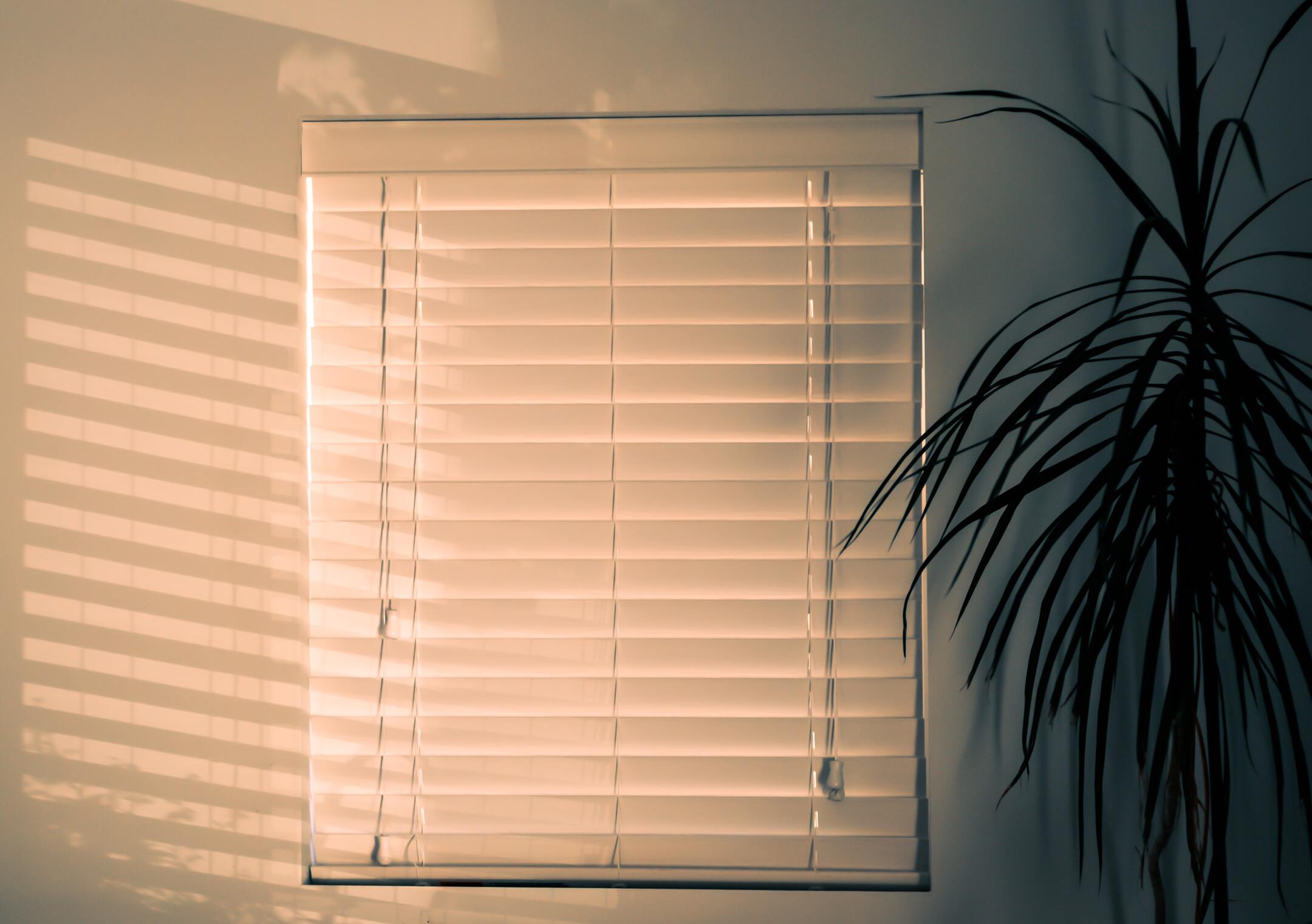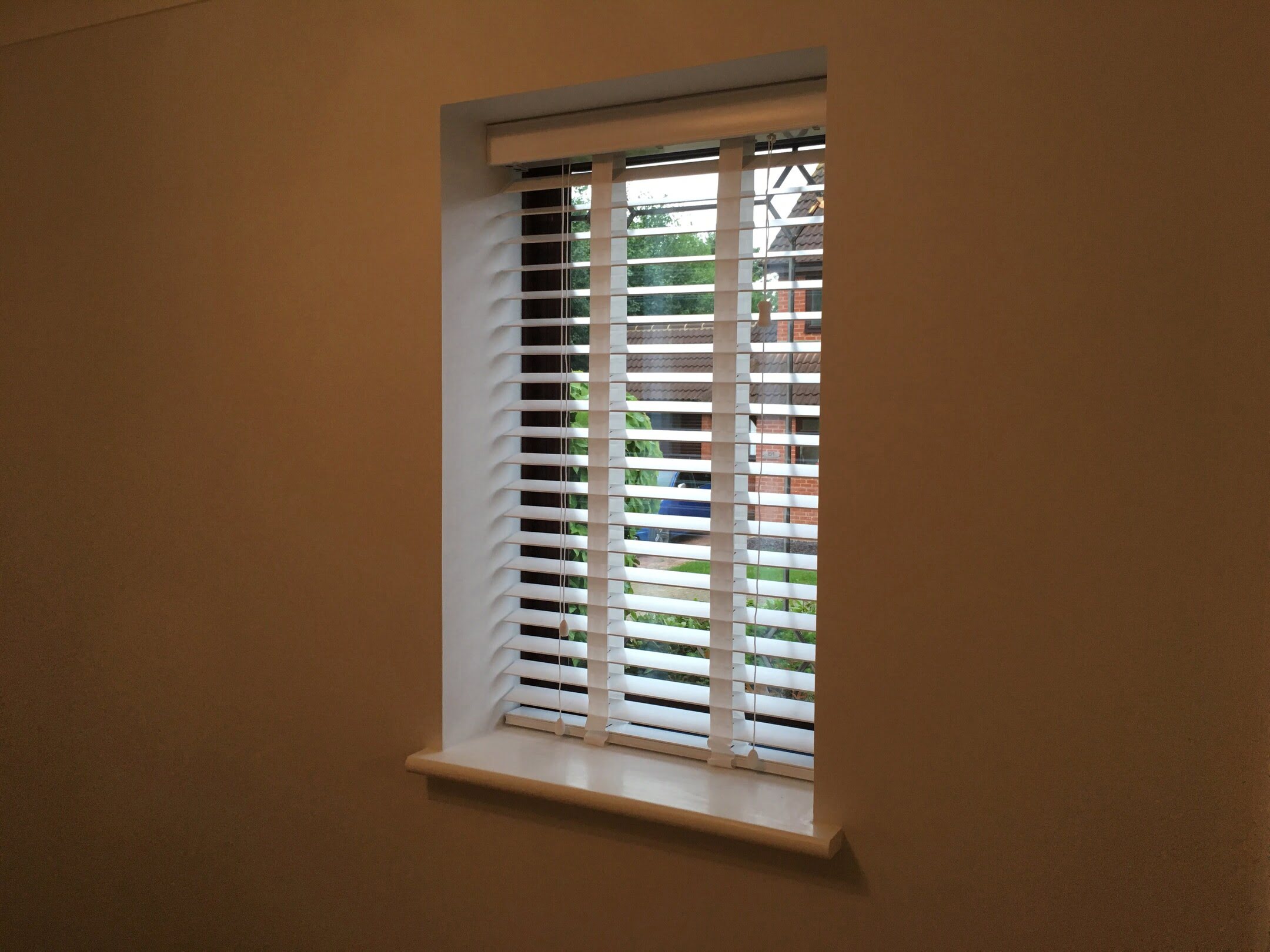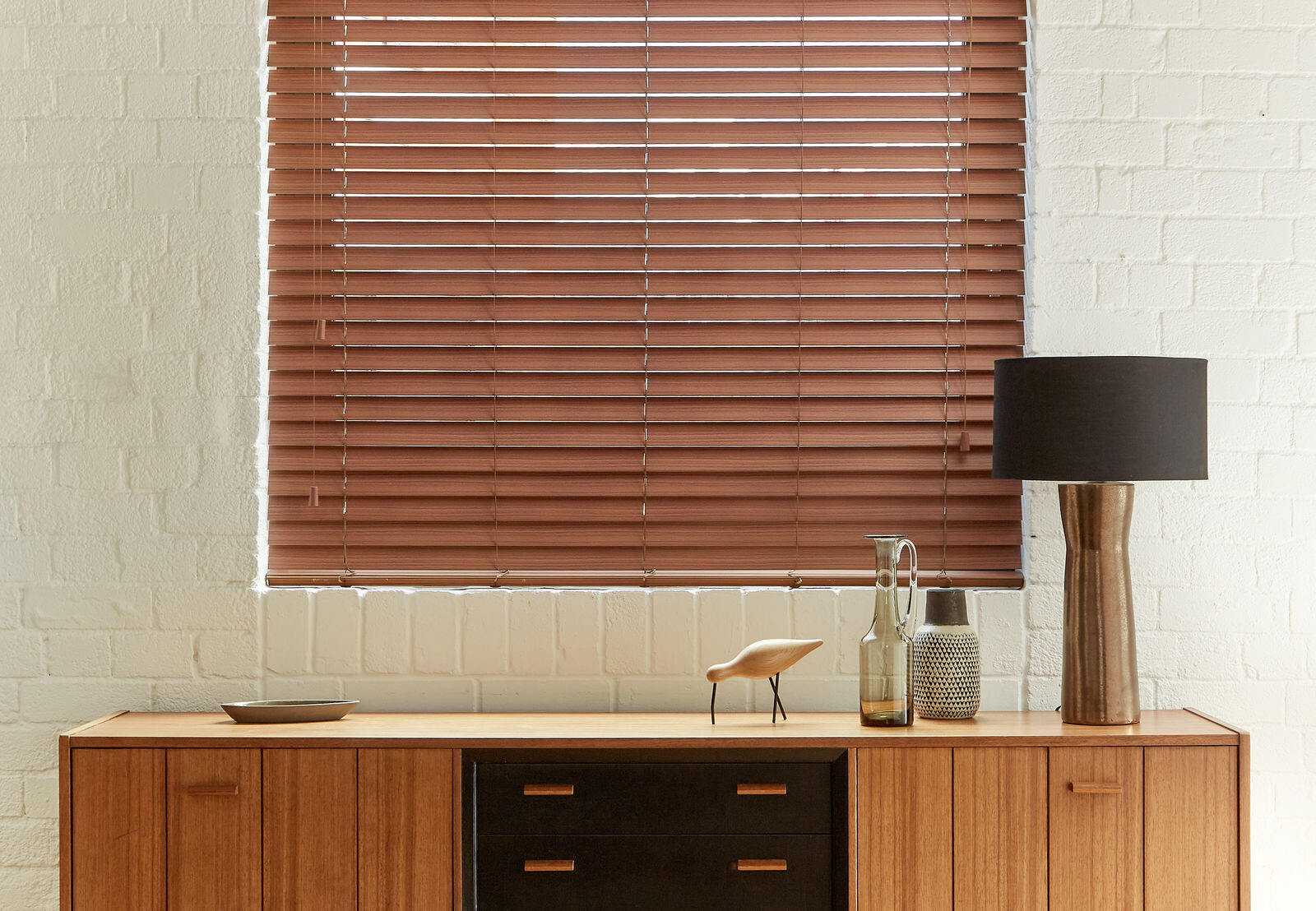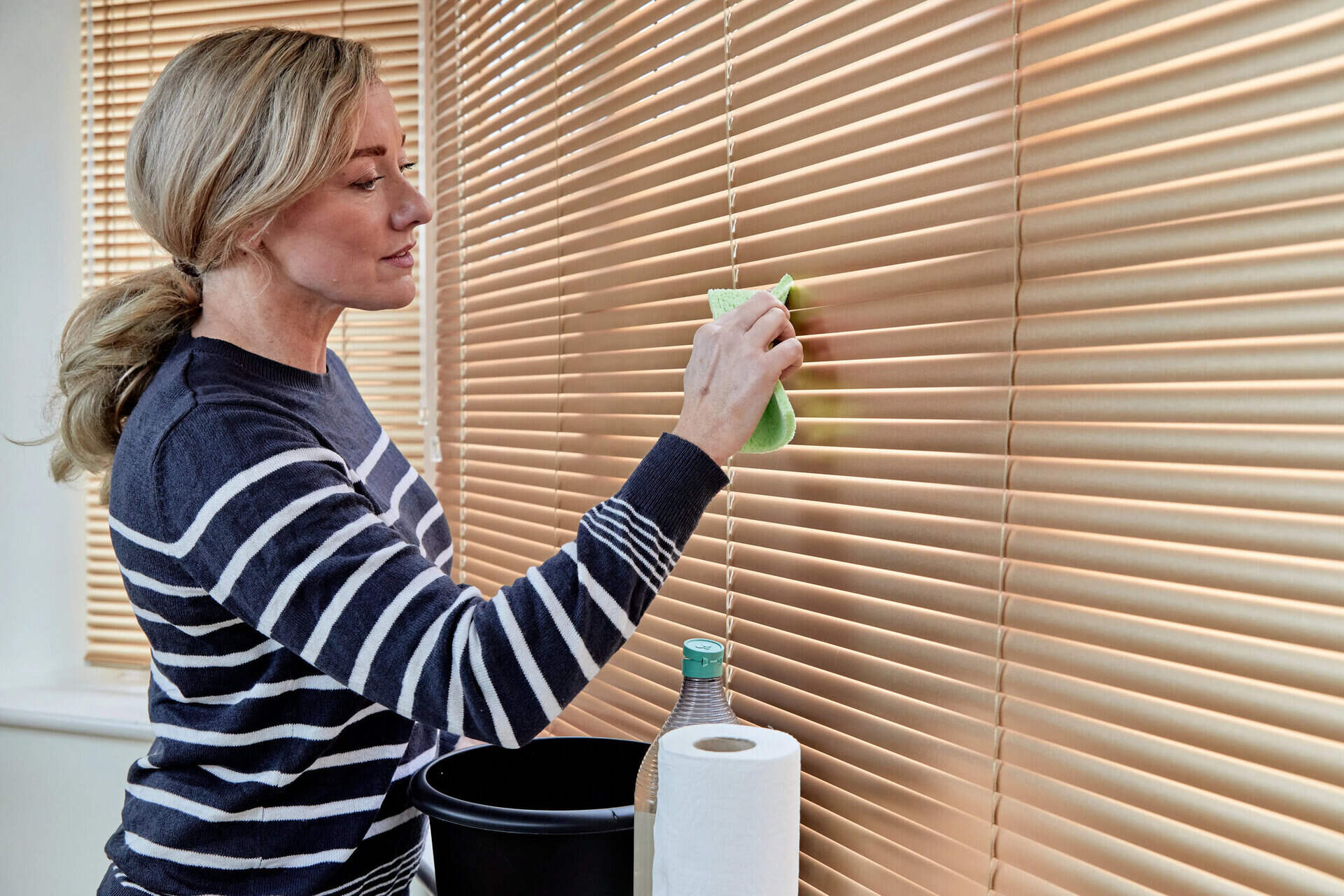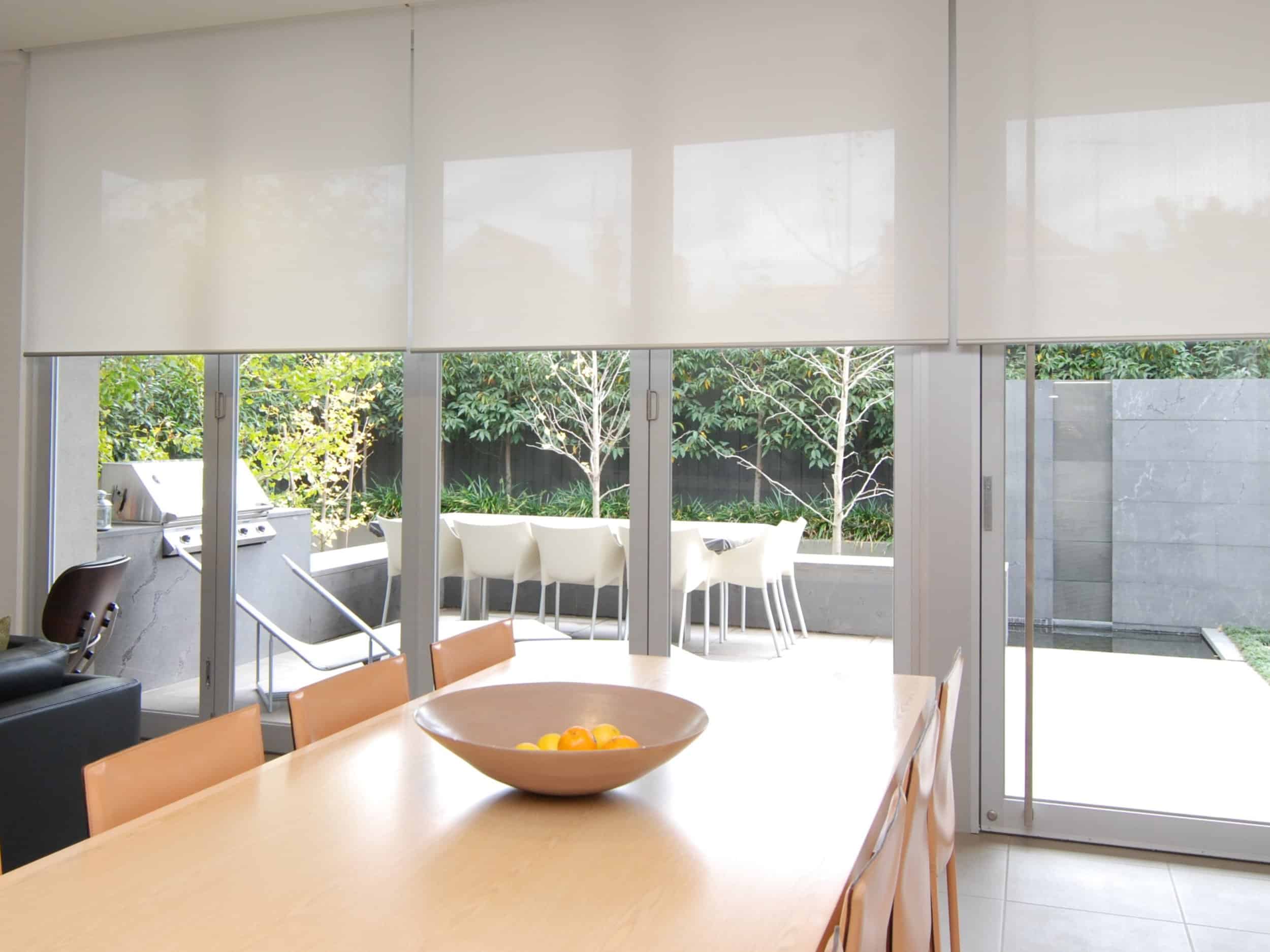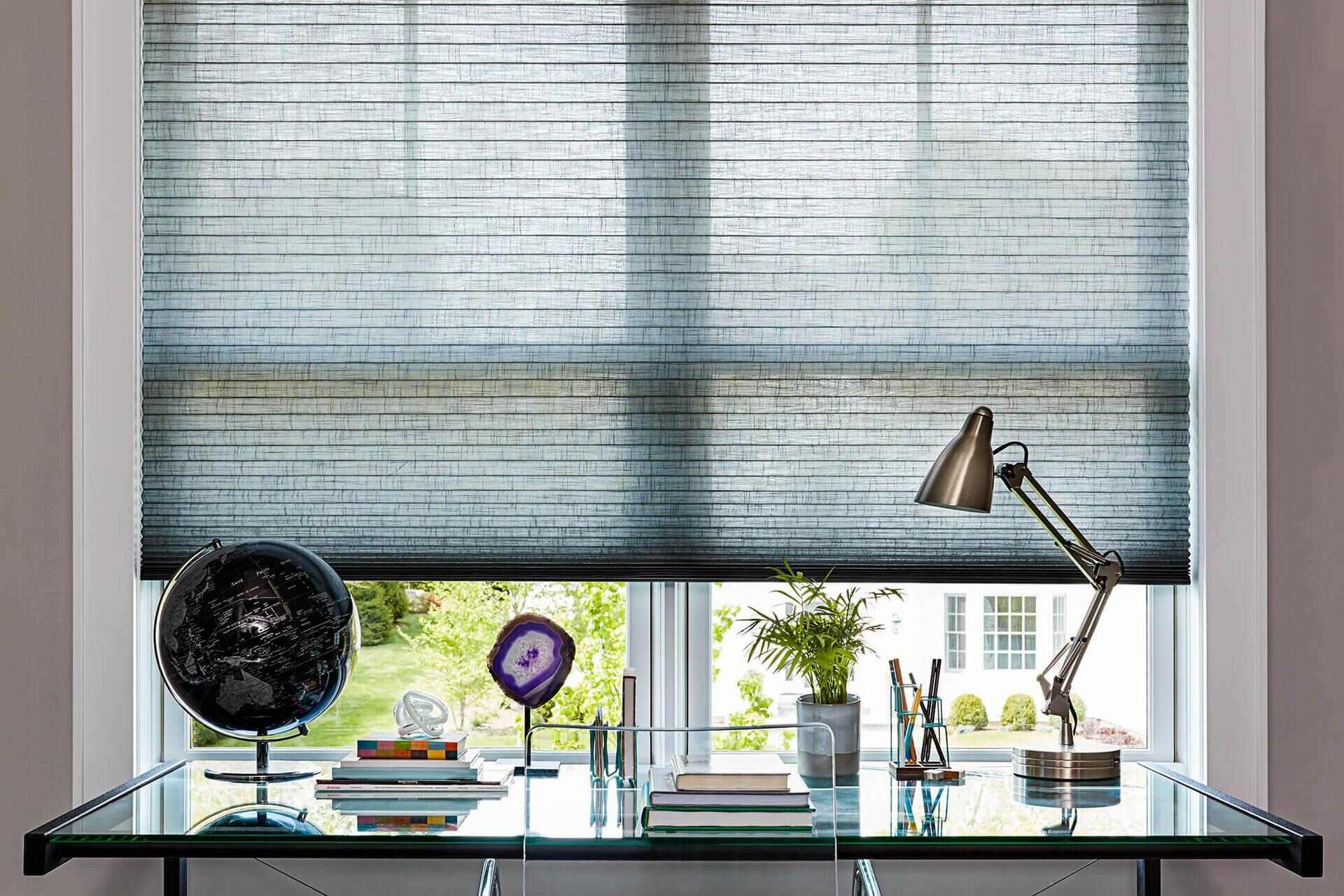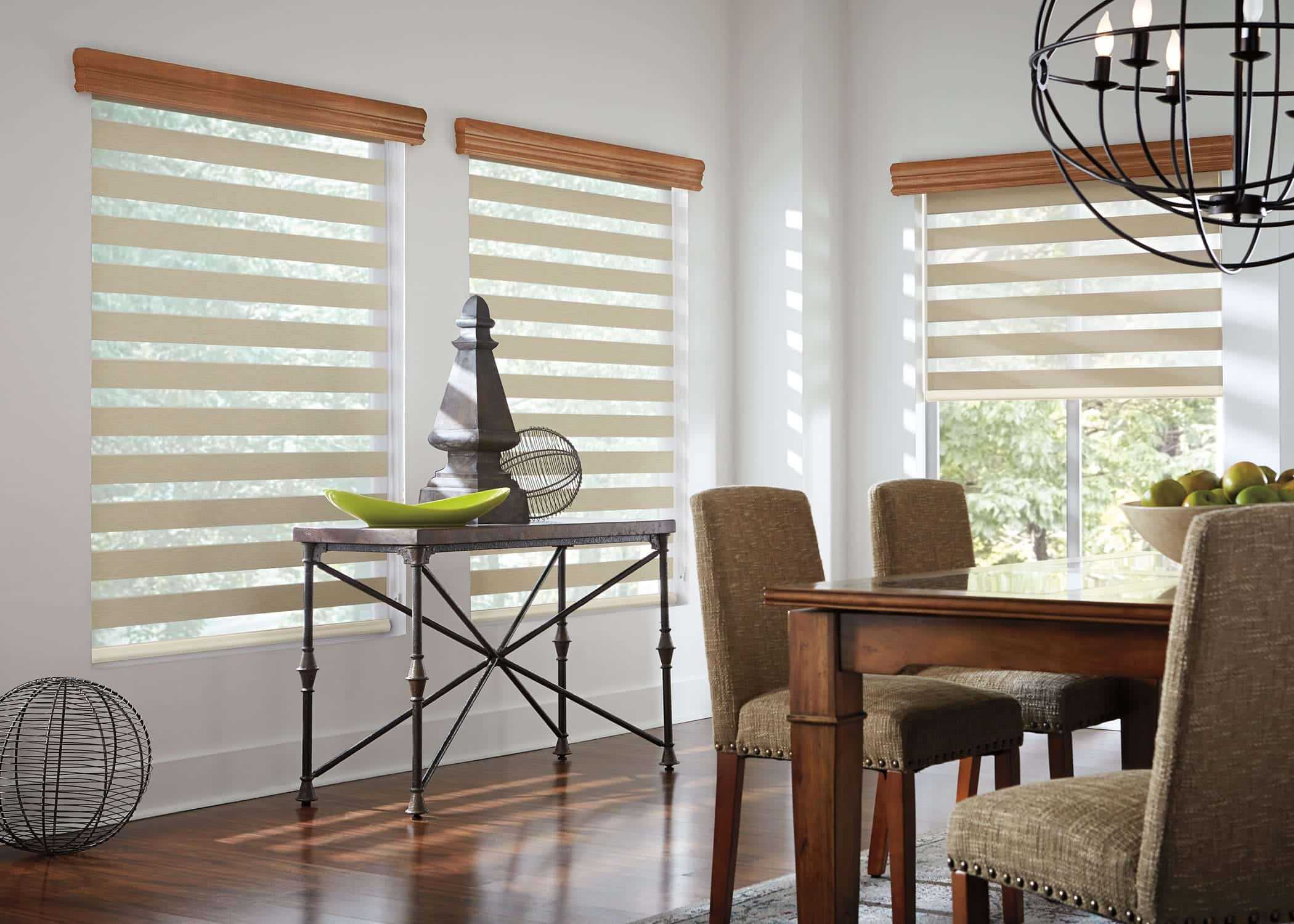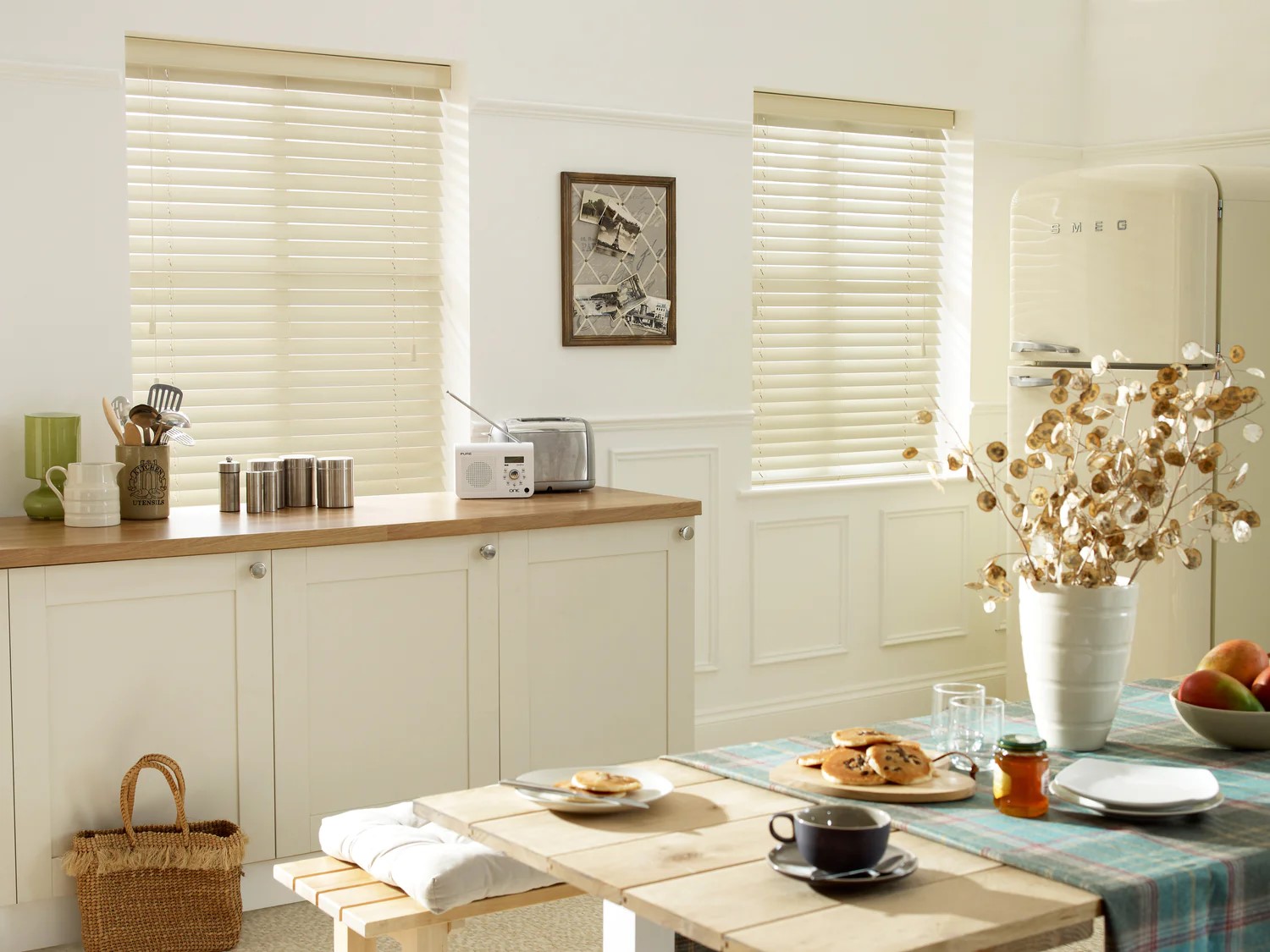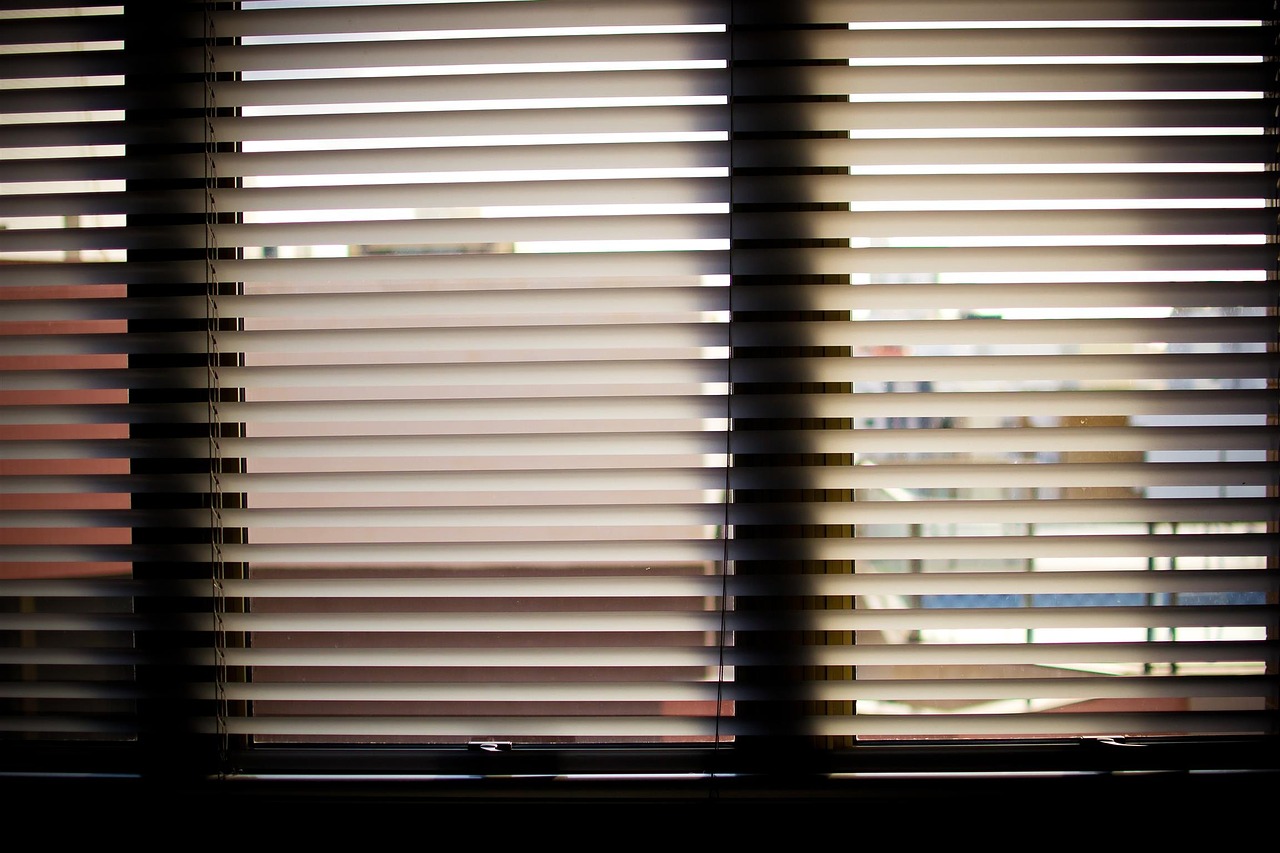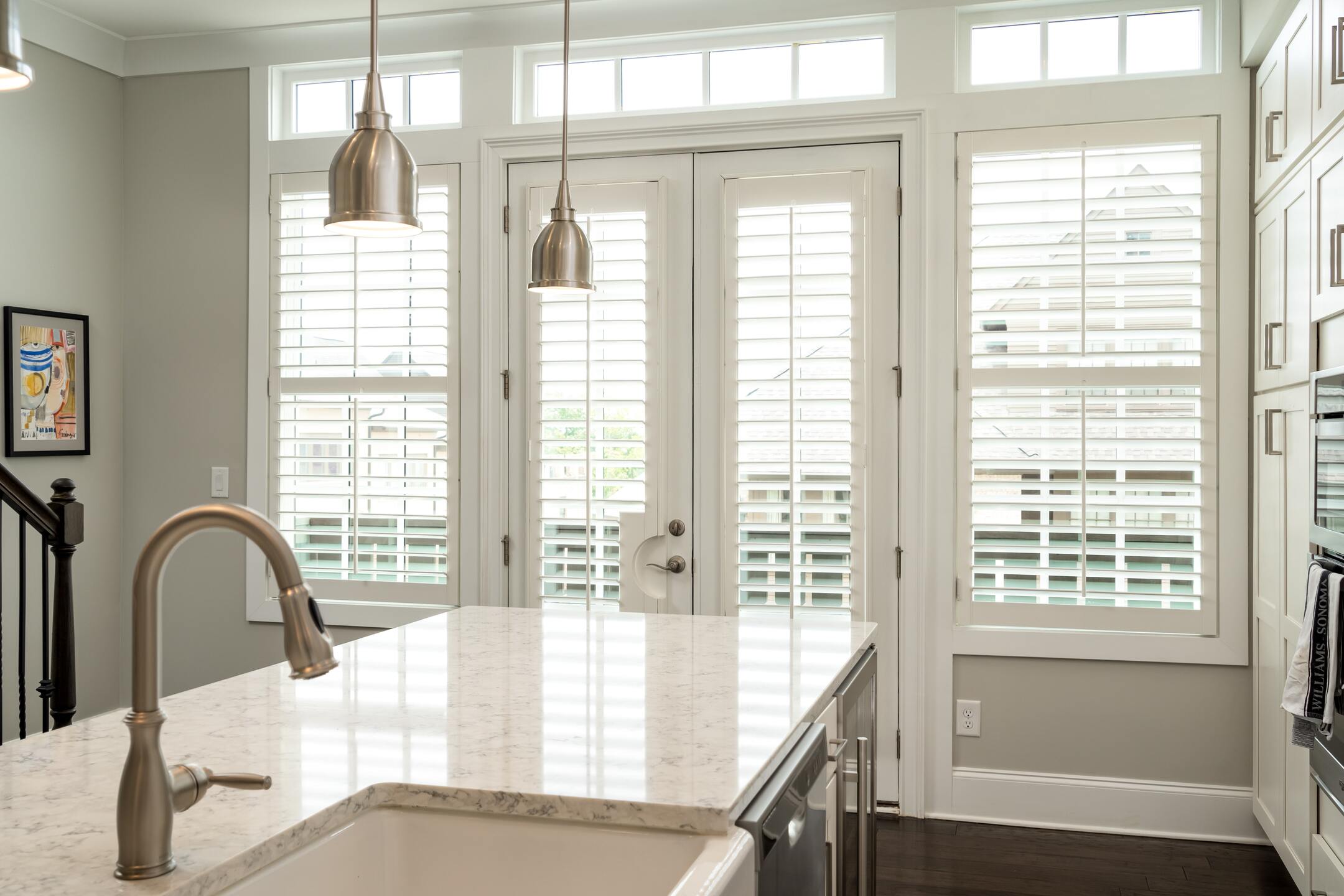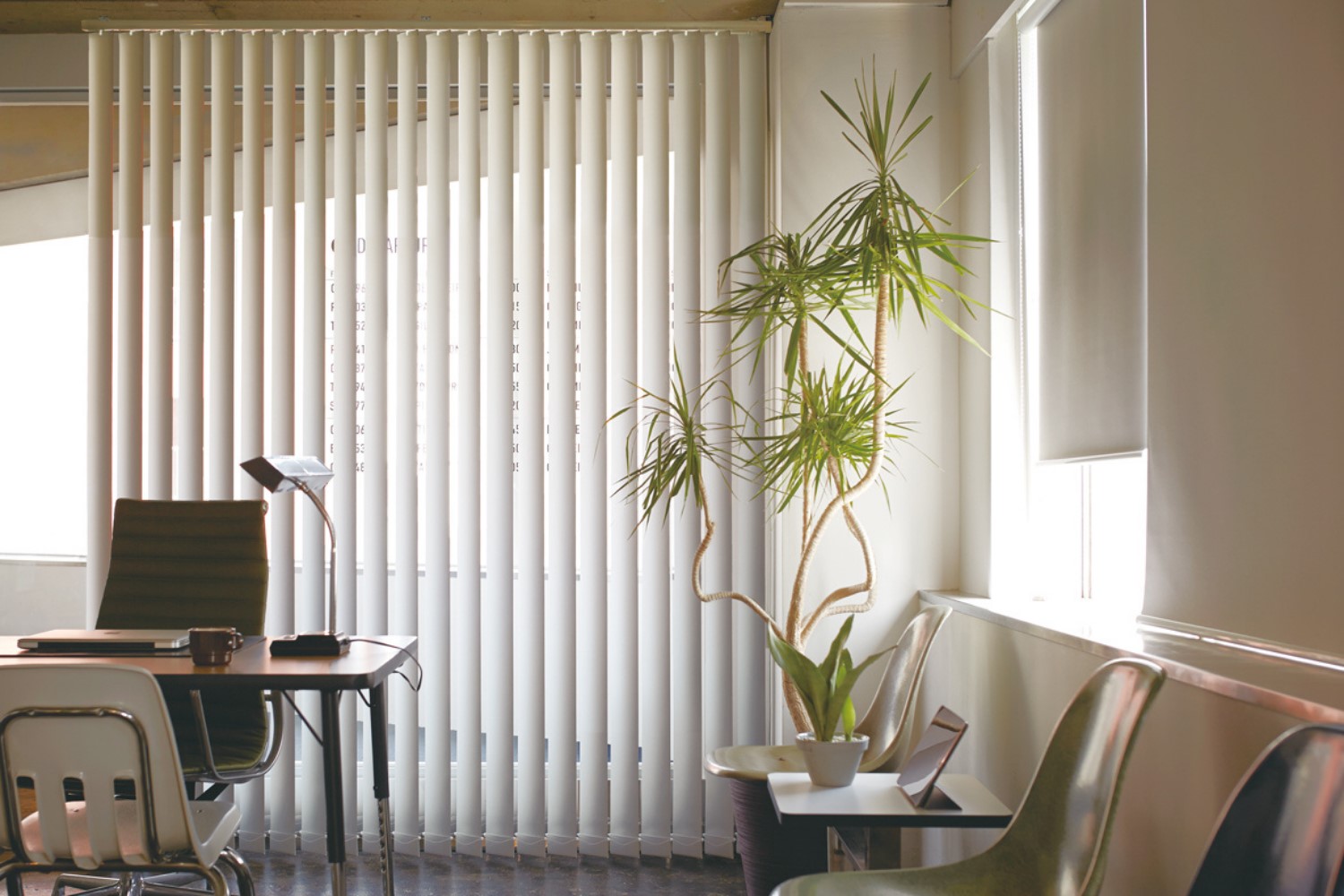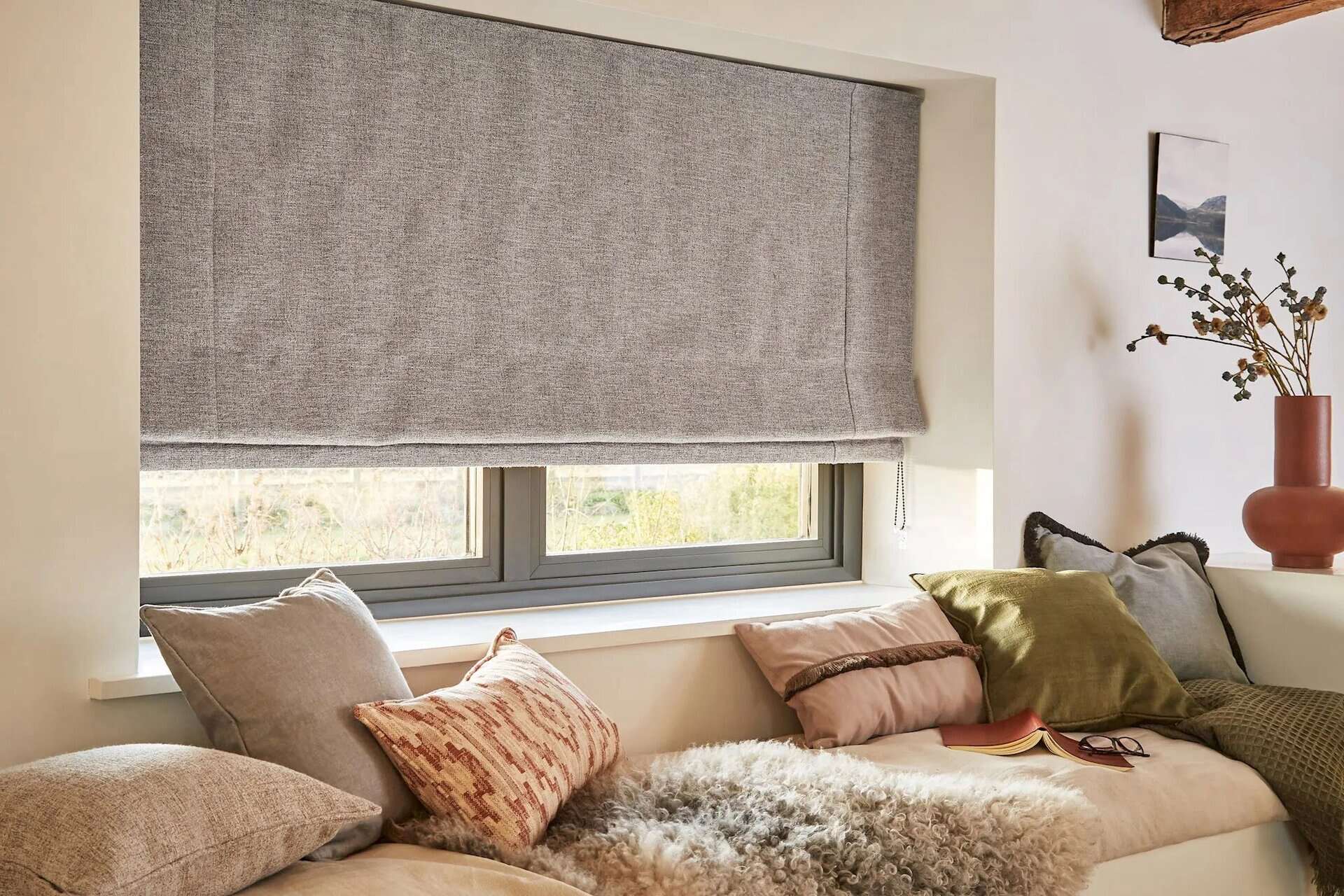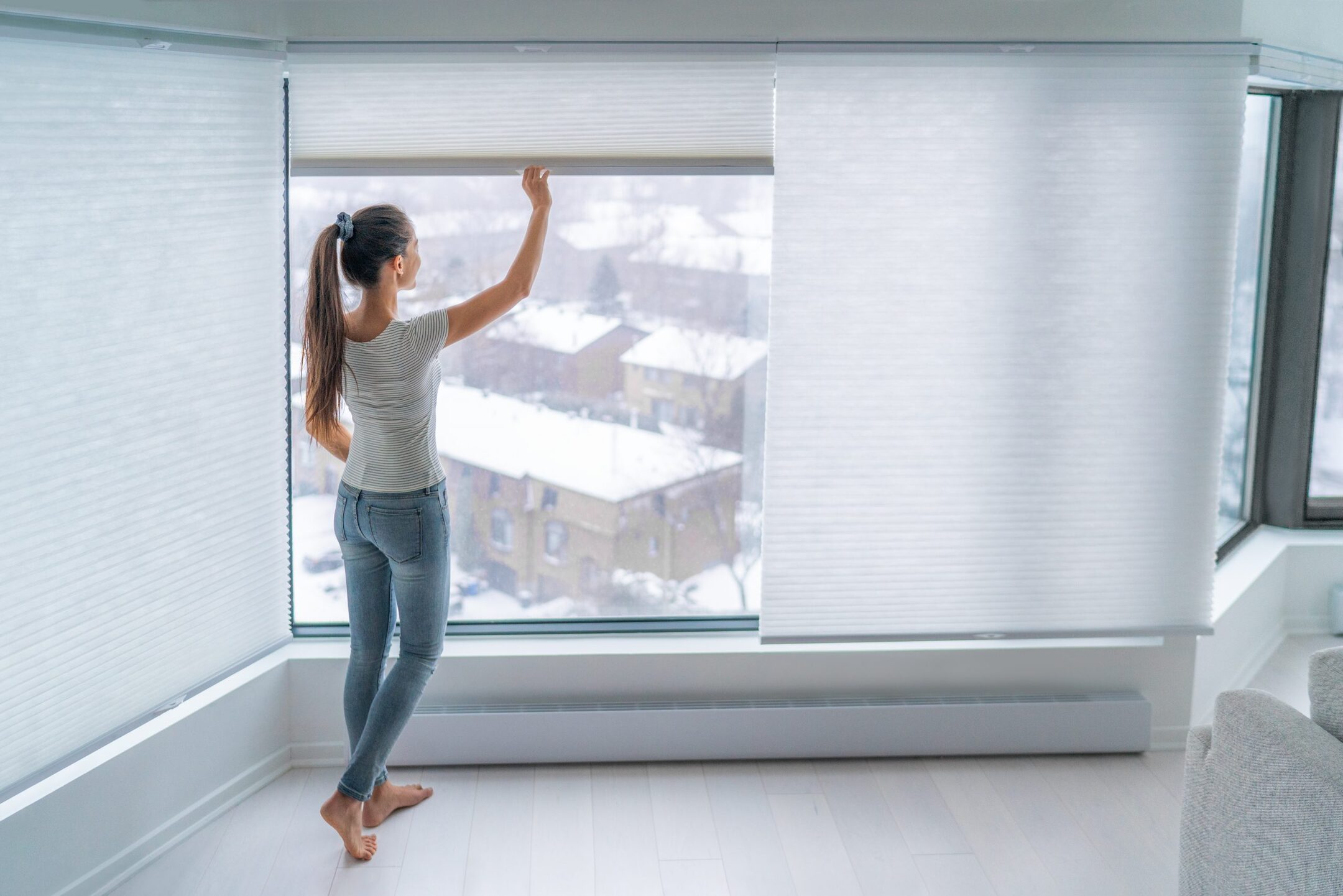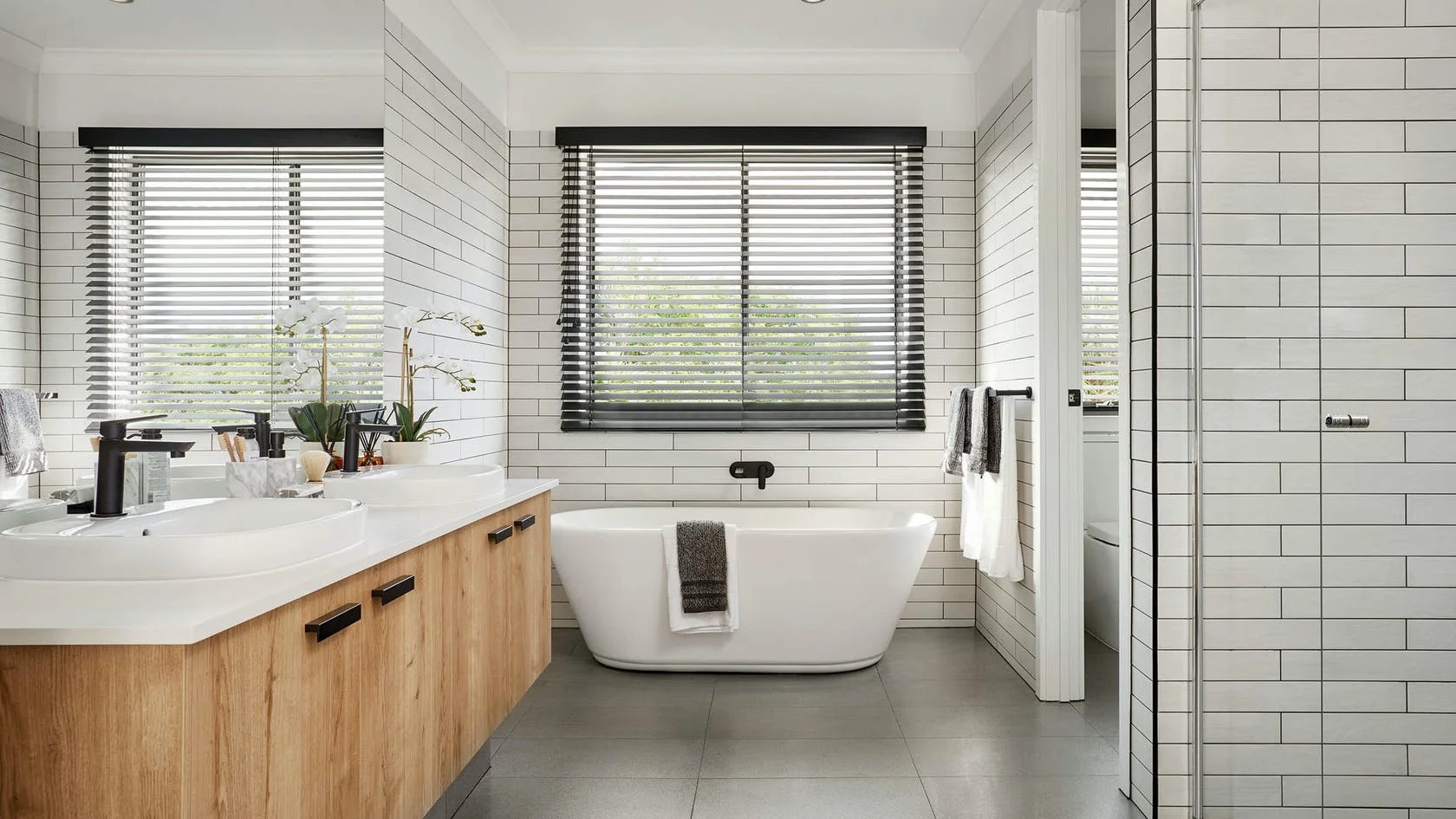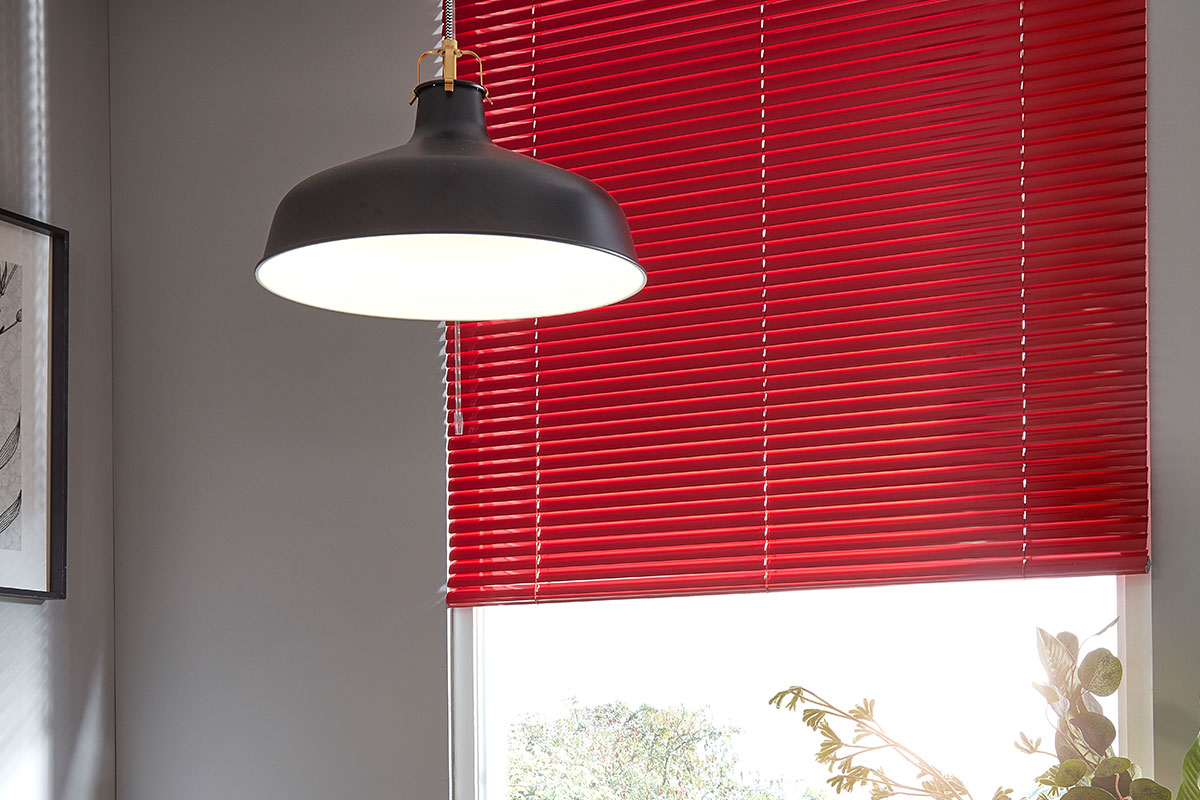

Articles
What Are Venetian Blinds
Modified: January 20, 2024
Discover the benefits and uses of Venetian blinds in our informative articles. Find out how these versatile window coverings can enhance your home's style and functionality.
(Many of the links in this article redirect to a specific reviewed product. Your purchase of these products through affiliate links helps to generate commission for Storables.com, at no extra cost. Learn more)
Introduction
Venetian blinds are a popular and versatile window covering option that has been used in homes and offices for centuries. These blinds consist of horizontal slats that can be adjusted to control the amount of light and privacy in a room. With their sleek design and functionality, Venetian blinds have become a staple in interior design.
In this article, we will explore the fascinating history of Venetian blinds, delve into their anatomy, discuss the materials used, outline the advantages and disadvantages, provide tips on choosing the right blinds for your space, and offer suggestions on how to maintain and clean them effectively.
Whether you are considering installing Venetian blinds or simply want to learn more about this timeless window covering, this article will provide you with a comprehensive guide.
So, let’s dive right in and discover the world of Venetian blinds!
Key Takeaways:
- Venetian blinds, with their rich history and enduring appeal, offer exceptional light control, privacy, and versatility, making them a timeless and practical choice for any space.
- When choosing Venetian blinds, consider factors such as material selection, light control, privacy needs, and operating mechanism to ensure the perfect balance of style and functionality for your windows.
Read also: 13 Best Venetian Blinds for 2024
History of Venetian Blinds
The history of Venetian blinds dates back to ancient times, with the concept of adjustable blinds originating in Egypt and Persia. These early blinds were made of reeds or other natural materials, and their purpose was primarily to provide shade and protection from the harsh sun.
However, it was in Venice, Italy, during the 18th century that the modern version of Venetian blinds as we know them today was invented. The city of Venice, known for its rich cultural heritage and intricate craftsmanship, was a hub of innovation and trade.
It is believed that Venetian blinds were initially developed to resolve two significant issues faced by the Venetians – the need for efficient window coverings to block the intense sunlight and the desire to maintain privacy in their homes and buildings.
The advent of metalworking techniques and the availability of materials such as iron and brass allowed for the development of the first adjustable slat blinds. These blinds, known as “Venetian” blinds due to their city of origin, quickly gained popularity in Europe and spread to other parts of the world.
During the 19th century, with the Industrial Revolution in full swing, the production of Venetian blinds became more streamlined. The invention of machinery for mass production made these blinds more accessible and affordable to the general public.
Over time, the design and materials used in Venetian blinds evolved. While the traditional wooden slats remained popular, options such as aluminum, PVC, and faux wood were introduced, offering greater durability and versatility.
Today, Venetian blinds continue to be a sought-after window covering choice, appreciated for their timeless elegance and practicality. They have undergone further innovations, including motorized options that allow users to control their blinds with the touch of a button.
The rich history and enduring appeal of Venetian blinds make them a classic and stylish choice for any home or office.
Anatomy of Venetian Blinds
Understanding the anatomy of Venetian blinds is essential to grasp how they function and how to make the most of their features. Let’s take a closer look at the various components that make up these versatile window coverings.
1. Slat: The slats are the horizontal bars that form the main body of the blinds. They can be made of various materials like wood, aluminum, or PVC. The slats are adjustable, allowing you to control the amount of light and privacy in the room.
2. Tapes or Cords: These are the strings or thin strips that hold the slats together and allow them to be raised, lowered, or angled. The tapes or cords are typically made from durable materials like nylon or polyester and are attached to the headrail.
3. Headrail: The headrail is the top part of the blind, housing the mechanism that controls the movement of the slats. It is usually made of aluminum, steel, or plastic and provides stability and support for the blinds.
4. Ladder Strings: The ladder strings run vertically throughout the blinds and hold the slats in place. They are attached to the tapes or cords and help distribute the weight of the slats evenly.
5. Tilt Mechanism: The tilt mechanism controls the angle or tilt of the slats. It allows you to adjust the amount of light and privacy by either tilting the slats open or closing them. The tilt mechanism can be operated using a wand or a tilt cord.
6. Lift Mechanism: The lift mechanism is responsible for raising or lowering the blinds. It can be operated using a cord or a wand, depending on the style of the blinds. The lift mechanism allows you to adjust the height of the blinds to control the amount of light entering the room.
7. Valance: The valance is the decorative covering that conceals the headrail and adds a finished look to the blinds. It can be a simple straight valance or a more elaborate design, serving both aesthetic and functional purposes.
Understanding the different parts of Venetian blinds will help you troubleshoot any issues, select suitable replacement parts, and ensure proper maintenance of your blinds. Knowing how the components work together will also enhance your overall experience in adjusting the blinds to your desired level of light and privacy.
Materials Used for Venetian Blinds
Venetian blinds are available in a variety of materials, each offering unique benefits and aesthetic appeal. Let’s explore the different materials commonly used for Venetian blinds.
1. Wood: Wooden Venetian blinds exude a classic and warm aesthetic, adding a touch of elegance to any space. They are typically made from durable hardwood such as basswood, bamboo, or cedar. Wood blinds are known for their natural beauty, warmth, and excellent light control. They provide insulation and can be stained or painted to match different decor styles.
2. Aluminum: Aluminum Venetian blinds are a popular choice due to their durability, affordability, and versatility. They are lightweight, low-maintenance, and resistant to moisture, making them suitable for areas like kitchens and bathrooms. Aluminum blinds are available in a wide range of colors and finishes, including matte, metallic, or brushed aluminum, allowing for customization and a sleek modern look.
3. PVC/Vinyl: PVC or vinyl Venetian blinds are an excellent choice for high-humidity areas such as bathrooms and kitchens, as they are resistant to moisture and easy to clean. They are also durable, affordable, and lightweight. PVC blinds come in various colors and textures to mimic the look of wood, making them a practical and cost-effective alternative for those who desire the aesthetics of wooden blinds without the maintenance requirements.
4. Faux Wood: Faux wood Venetian blinds combine the beauty of wood with the durability and moisture resistance of other materials. Made of PVC or a blend of PVC and wood particles, these blinds offer the appearance of real wood at a more affordable price point. Faux wood blinds are resistant to warping, fading, and cracking, making them suitable for areas with high humidity or sun exposure.
5. Bamboo/Woven Wood: Bamboo or woven wood Venetian blinds bring a natural and eco-friendly element to any space. Constructed with natural materials such as bamboo, jute, or grasses, these blinds offer a unique texture and organic aesthetic. They provide a warm and inviting ambiance while allowing filtered light to enter the room. Bamboo blinds are a popular choice for those seeking a rustic, tropical, or bohemian-inspired decor style.
When choosing the material for your Venetian blinds, consider the style you want to achieve, the level of privacy and light control required, as well as the specific needs of your space. With a wide range of materials to choose from, you can find Venetian blinds that perfectly complement and enhance your interior design.
Advantages of Venetian Blinds
Venetian blinds offer a range of advantages that make them a popular choice for both residential and commercial spaces. Let’s explore the key benefits of Venetian blinds.
- Light Control: One of the biggest advantages of Venetian blinds is their exceptional light control capabilities. With adjustable slats, you can easily regulate the amount of sunlight entering the room by tilting the slats to your desired angle. This allows you to create a comfortable and well-lit space while reducing glare and protecting your furniture and belongings from damage caused by prolonged exposure to direct sunlight.
- Privacy: Venetian blinds provide customizable privacy options. You can adjust the slats to maintain privacy while still allowing natural light to filter into the room. By simply tilting the slats, you can enjoy a private space without sacrificing natural light or completely blocking the view from outside.
- Versatility: Venetian blinds are available in a wide range of materials, colors, and finishes, making them highly versatile. Whether you prefer the classic and warm appearance of wooden blinds, the sleek and modern look of aluminum blinds, or the natural and earthy vibe of bamboo blinds, there is a style to suit every interior design aesthetic.
- Durability: Different materials used in Venetian blinds, such as aluminum, PVC, and faux wood, offer excellent durability. They are resistant to warping, fading, and cracking, ensuring that your blinds will maintain their functionality and appearance for years to come. This durability also makes Venetian blinds a cost-effective investment over time.
- Easy Maintenance: Venetian blinds are relatively easy to clean and maintain. Dusting the slats regularly with a soft cloth or using a vacuum cleaner with a brush attachment can help keep them clean and free from dust and debris. For more thorough cleaning, you can wipe the slats with a mild detergent solution or use specialized blind cleaning tools. The low-maintenance nature of Venetian blinds makes them a convenient choice for busy households or commercial spaces.
- Energy Efficiency: Venetian blinds can contribute to energy efficiency in your space. By adjusting the slats, you can control the amount of heat and sunlight entering the room, reducing the need for excessive air conditioning or heating. This can lead to energy savings and a more comfortable indoor environment.
Overall, Venetian blinds offer a combination of style, functionality, and practicality. Their ability to control light and privacy, their versatility in design, and their durability and easy maintenance make them a smart choice for any space.
When cleaning Venetian blinds, use a microfiber cloth or duster to remove dust and debris. For a deeper clean, mix water and mild detergent and gently wipe each slat. Avoid using harsh chemicals or abrasive materials to prevent damage.
Read more: How To Make Venetian Blinds
Disadvantages of Venetian Blinds
While Venetian blinds offer numerous advantages, it’s important to consider their potential drawbacks before making a decision. Here are some of the disadvantages associated with Venetian blinds:
- Dust Accumulation: The horizontal slats of Venetian blinds can collect dust and dirt over time. This requires regular cleaning to maintain their appearance and prevent allergens from circulating in the air. If not properly cleaned, the accumulated dust can affect indoor air quality and contribute to respiratory issues.
- Susceptible to Damage: The slats of Venetian blinds can be susceptible to damage, especially if they are made of materials like wood or faux wood. Sharp objects or excessive force can cause scratching, denting, or warping of the slats, affecting both the aesthetic appeal and functionality of the blinds.
- Difficult to Clean: While routine dusting is relatively simple, cleaning Venetian blinds thoroughly can be a time-consuming task. Each individual slat needs to be cleaned carefully to remove dirt and grime. This can become challenging, especially if you have large or numerous windows with many blinds to clean.
- Noisy Operation: Venetian blinds can produce noise when being adjusted or raised and lowered. The movement of the slats and the operation of the cords or wands can create a rattling or clattering sound. This noise may be bothersome, particularly in quiet environments or areas where concentration is required.
- Less Privacy at Night: While Venetian blinds offer customizable privacy during the day, they may provide less privacy at night, especially when indoor lights are on. As light shines through the gaps between slats, it can create silhouettes that may be visible from the outside. Additional window coverings such as curtains or blinds with blackout liners may be necessary for enhanced nighttime privacy.
- Complex Mechanism: The intricate mechanism of Venetian blinds, including the tilt and lift controls, can be complex for some individuals, especially those with limited mobility or dexterity. Operating the blinds may require fine motor skills and may not be as user-friendly for everyone.
It’s important to weigh both the advantages and disadvantages of Venetian blinds when considering them for your space. By understanding and addressing these potential drawbacks, you can make an informed decision and choose the window covering option that best suits your needs and preferences.
Choosing the Right Venetian Blinds for Your Space
When it comes to choosing Venetian blinds for your space, there are several factors to consider to ensure you make the right decision. Here are some key points to keep in mind:
- Window Measurements: Start by measuring the windows where you plan to install the blinds. Accurate measurements will help you determine the size of the blinds you need. Measure both the width and height, as well as any considerations such as window frames or protrusions that may impact the blinds’ fit.
- Material Selection: Consider the material options available and choose one that best matches your style and functional requirements. Wooden blinds offer a classic and warm look, aluminum blinds provide a sleek and modern appearance, and PVC or faux wood blinds offer durability and moisture resistance.
- Light Control: Determine the level of light control you desire in the room. If you want maximum light control, opt for blinds with smaller slats or blackout blinds that block out light completely. If you prefer a softer, filtered light, larger slats or sheer blinds may be more suitable.
- Privacy Needs: Consider your privacy requirements. If privacy is a priority, choose blinds with slats that can be tightly closed to prevent visibility from the outside. Additionally, consider whether you need additional window coverings such as curtains or blinds with privacy liners for enhanced privacy, especially at night.
- Color and Finish: Select a color and finish that complements your interior design and overall aesthetic. Whether you want a neutral tone to blend in seamlessly or a bold color to make a statement, choose blinds that enhance the overall look and feel of the room.
- Operating Mechanism: Consider the operating mechanism that suits your preferences and needs. Venetian blinds can be operated with cords, wands, or motorized systems. Choose an option that is convenient and easy to use for you. Motorized blinds offer the convenience of remote or automated control, ideal for hard-to-reach windows or individuals with mobility challenges.
- Budget: Set a budget for your Venetian blinds and explore options within your price range. Different materials and features may vary in cost, so determining your budget beforehand will help narrow down your choices.
It’s also a good idea to consult with professionals or experts in the field who can provide guidance and advice based on your specific needs and preferences. Additionally, consider reading reviews and seeking recommendations to ensure you choose a reputable supplier or manufacturer.
By considering these factors and taking the time to research and explore your options, you can select the right Venetian blinds that not only meet your functional requirements but also enhance the overall beauty and ambiance of your space.
Maintaining and Cleaning Venetian Blinds
Proper maintenance and regular cleaning of Venetian blinds are essential to keep them looking their best and functioning properly. Here are some tips to help you maintain and clean your blinds effectively:
- Dusting: Dusting your blinds regularly is the first step in maintenance. Use a soft cloth, feather duster, or a microfiber blind cleaner to gently remove dust and debris from the slats. Start from the top and work your way down, ensuring both sides of the slats are thoroughly dusted.
- Vacuuming: If your blinds have a heavy dust buildup, using a vacuum cleaner with a brush attachment can help remove the dirt more effectively. Be gentle while vacuuming to avoid damage to the slats or cords.
- Spot Cleaning: For stains or spills on the slats, spot cleaning may be necessary. Use a mild detergent mixed with water and a soft cloth to gently wipe the affected areas. Avoid using harsh chemicals or abrasive cleaners that could damage the materials.
- Deep Cleaning: Periodically, you may need to give your blinds a more thorough cleaning. Fill a bathtub or large basin with warm water and a mild detergent. Remove the blinds from the window and immerse them in the solution. Gently agitate the blinds, then rinse them with clean water. Hang them to dry completely before reinstalling.
- Cleaning Cords and Mechanisms: Dust and dirt can also accumulate on the cords and mechanisms of the blinds. Use a soft cloth or a toothbrush dipped in soapy water to clean these areas. Be careful not to soak the cords excessively or use excessive force, as this can cause damage.
- Preventing Damage: Take precautions to prevent damage to your Venetian blinds. Avoid using excessive force when raising or lowering the blinds, as this can put strain on the cords and mechanisms. Be cautious when operating the tilt mechanism to prevent twisting or breaking the slats. If you have pets or young children, keep them away from the blinds to minimize the risk of accidental damage.
- Professional Cleaning: If your blinds require a deep cleaning beyond what you can do yourself, consider hiring a professional blind cleaning service. They have the expertise and specialized equipment to clean your blinds thoroughly, ensuring they look their best.
- Regular Maintenance: Incorporate regular maintenance into your routine to keep your blinds clean and in good condition. Dust them at least once a week and perform a deeper cleaning every few months or as needed.
By following these maintenance and cleaning tips, you can extend the lifespan of your Venetian blinds and enjoy their functionality and aesthetics for years to come. Remember to always refer to the manufacturer’s instructions for specific care recommendations, as different materials may have unique cleaning requirements.
Conclusion
Venetian blinds have withstood the test of time as a practical and stylish window covering option. With their adjustable slats, they offer excellent control over light and privacy, allowing you to create the desired ambiance in your space. Throughout history, Venetian blinds have evolved in design and material options, catering to a wide range of styles and preferences.
When choosing Venetian blinds for your space, consider factors such as window measurements, material selection, light control requirements, privacy needs, color, finish, operating mechanism, and budget. Taking these factors into account will help ensure you make the right choice that aligns with both your functional requirements and aesthetic preferences.
Regular maintenance and proper cleaning are vital for preserving the beauty and functionality of your Venetian blinds. Dusting regularly, spot cleaning stains, and periodically deep cleaning will help keep them looking their best. Take care not to use abrasive cleaners or harsh chemicals that could damage the blinds. Additionally, handle the cords and mechanisms gently to prevent strain or breakage.
While Venetian blinds offer numerous advantages in terms of light control, privacy, versatility, durability, easy maintenance, and energy efficiency, it’s important to be aware of potential disadvantages such as dust accumulation, susceptibility to damage, difficult cleaning process, noisy operation, reduced privacy at night, and complex mechanism.
In conclusion, Venetian blinds are a timeless and practical window covering choice that adds elegance and functionality to any space. With proper care and maintenance, they can serve as a long-lasting and aesthetically pleasing solution for controlling light and privacy in your home or office. Choose the right material, design, and operating mechanism to enhance your interior design while ensuring optimal functionality.
Whether you opt for the classic allure of wooden blinds, the modern appeal of aluminum blinds, the durability of PVC or faux wood blinds, or the natural beauty of bamboo or woven wood blinds, Venetian blinds are sure to provide the perfect balance of style and functionality for your windows.
Frequently Asked Questions about What Are Venetian Blinds
Was this page helpful?
At Storables.com, we guarantee accurate and reliable information. Our content, validated by Expert Board Contributors, is crafted following stringent Editorial Policies. We're committed to providing you with well-researched, expert-backed insights for all your informational needs.
